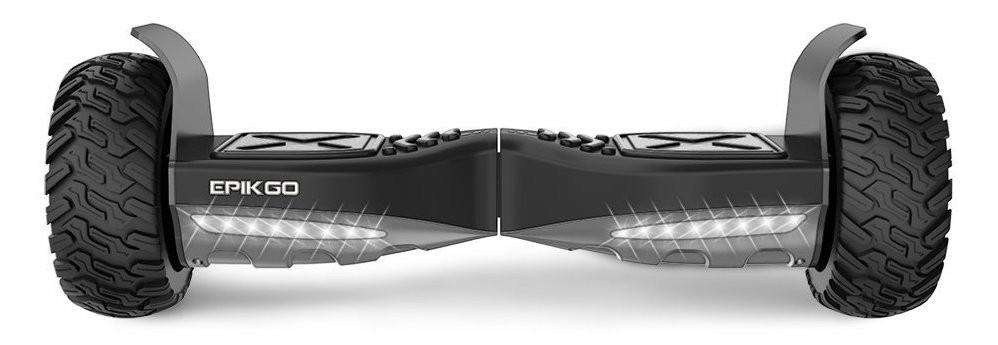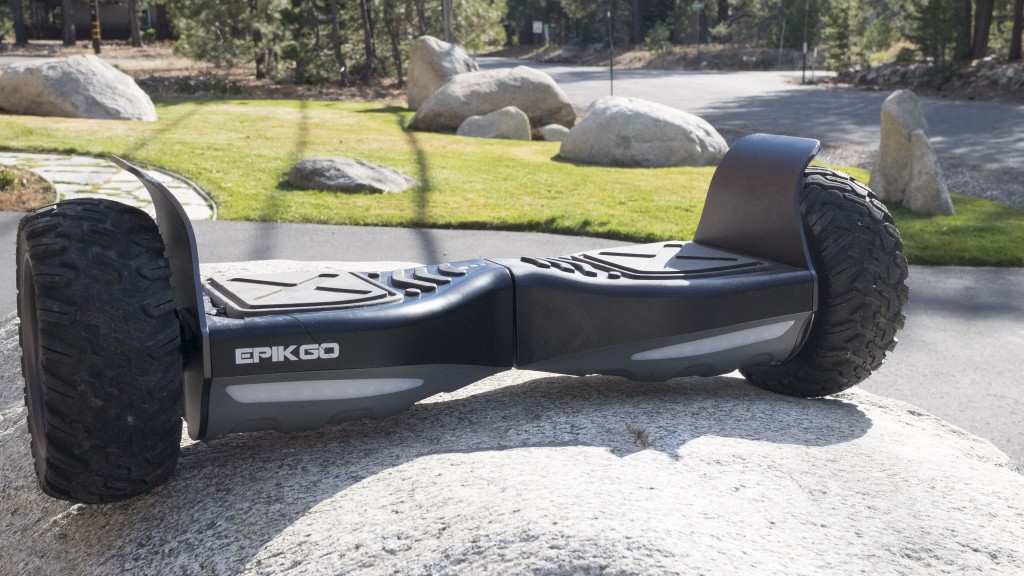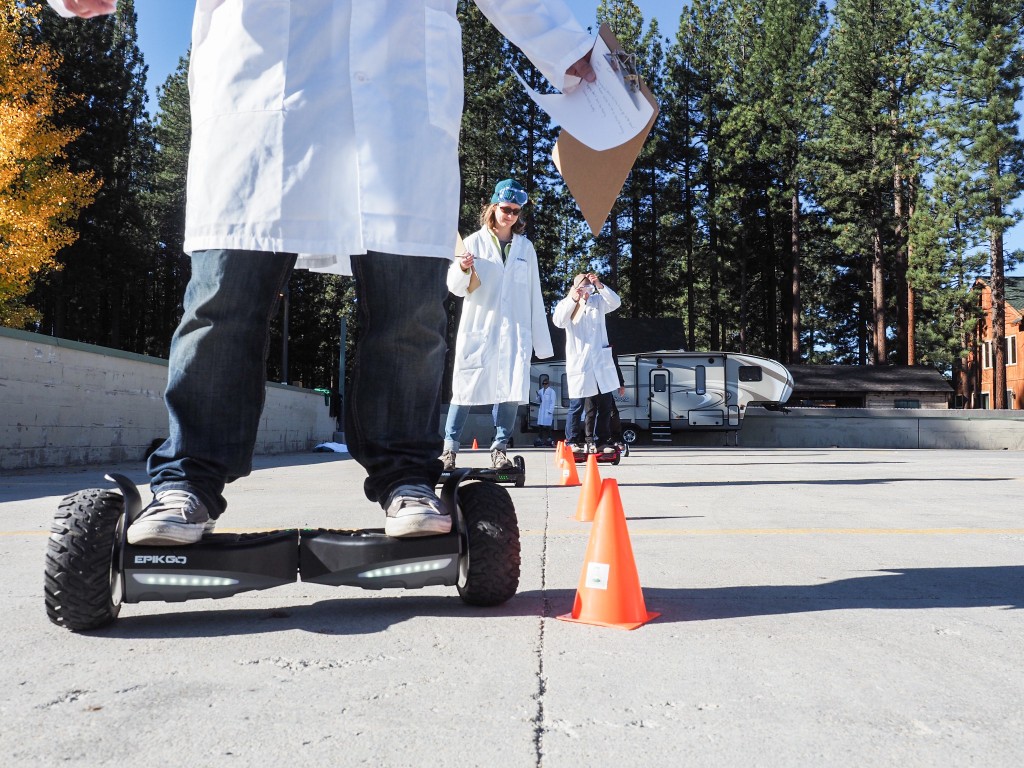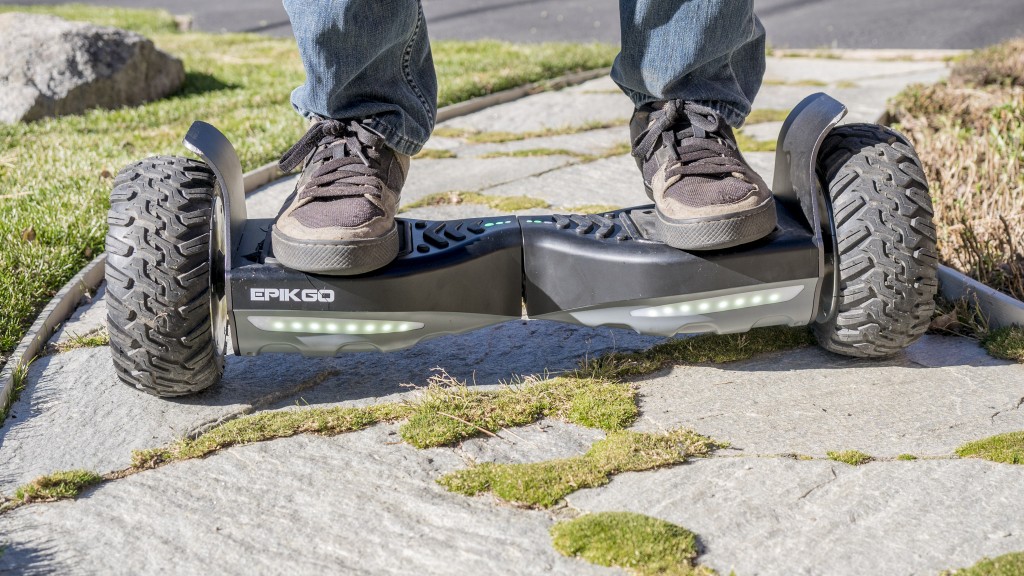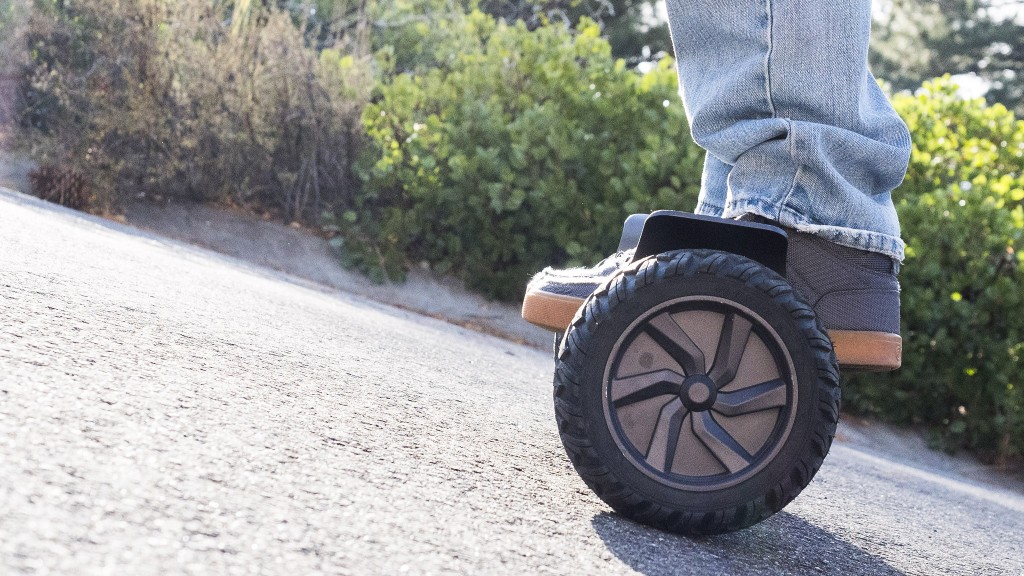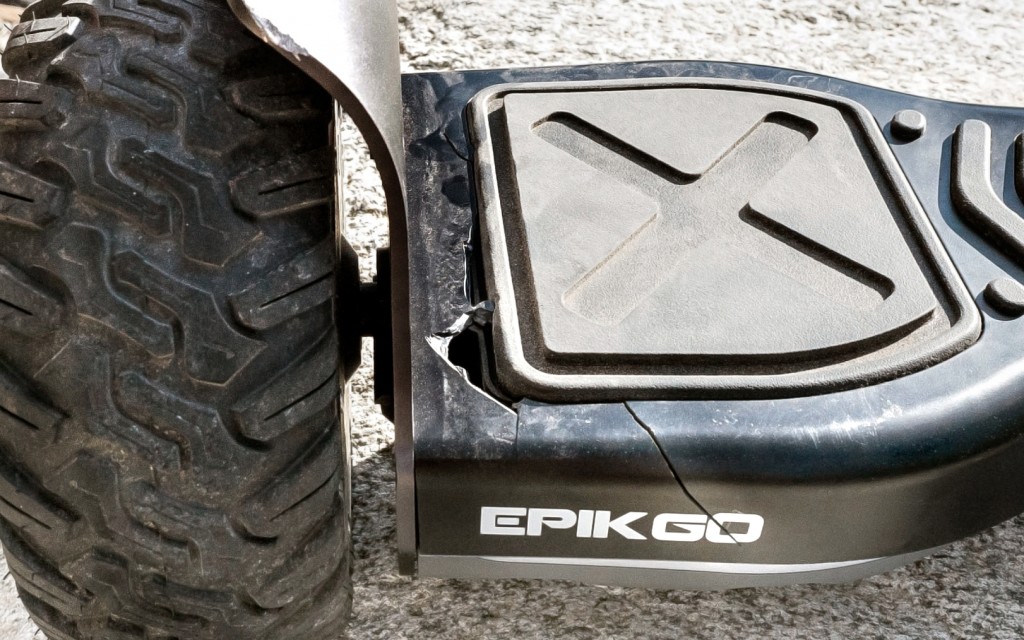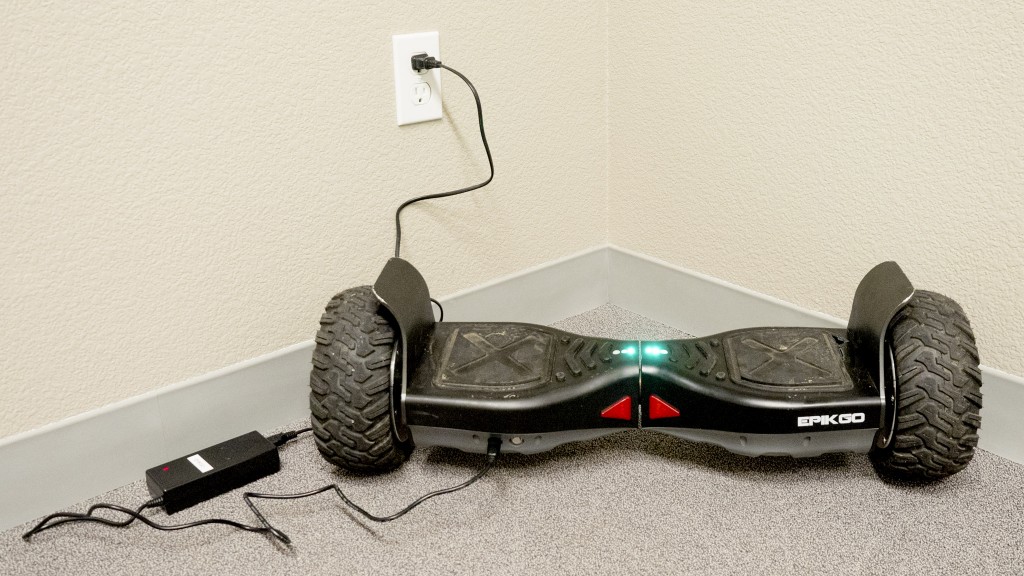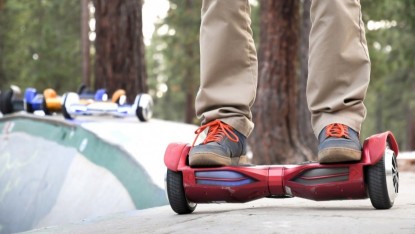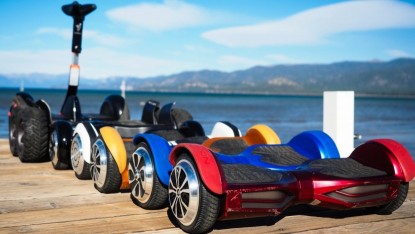Epikgo Classic Review
Our Verdict
Compare to Similar Products
This Product Epikgo Classic | |||||
|---|---|---|---|---|---|
| Awards | Best for Commuting | Best Hoverboard For Most People | Best Value and Entry-Level Option | ||
| Price | $650 List $399.99 at Amazon | $600 List | $230 List $149.99 at Amazon | $150 List | $180 List |
Overall Score  |
|||||
| Star Rating | |||||
| Bottom Line | A great board especially if you are looking to tear it up off pavement | This commuter vehicle is a sleek workhorse that stands out for its all-terrain performance | This affordable board has comfortable foot pads and decent maneuverability but can't cut it off-road | Despite this board's so-so durability, its budget-friendly price and beginner-friendly ride will maintain appeal for certain riders | This board offers decent stability for new riders but lacks standout features such as Bluetooth connectivity |
| Rating Categories | Epikgo Classic | Segway Ninebot S | Hover-1 Chrome 2.0 | XPRIT Classic | Swagtron Swagboard... |
| Fun Factor (50%) | |||||
| Outdoor Capabilities (20%) | |||||
| Support (20%) | |||||
| Battery (10%) | |||||
| Specs | Epikgo Classic | Segway Ninebot S | Hover-1 Chrome 2.0 | XPRIT Classic | Swagtron Swagboard... |
| Measured Run Time | 113 min | 95 min | 107 min | 75 min | 37 min |
| Measured Weight | 32.2 lbs | 29.6 lbs | 15.2 Ibs | 13.1 Ibs | 14.7 Ibs |
| Measured Speed | 9.5 mph | 10.5 mph | 7 mph | 6.5 mph | 6.3 mph |
| Measured Range | 7.2 mi | 11.3 mi | 3.3 mi | 4.5 mi | 2.4 mi |
| Measured Charge Time | 2 hours, 30 min | 2 hours, 40 min | 4.5 hours | 4 hours 41 minutes | 3+ hours (manufacturer says not to charge longer than this) |
| Weight Limit | 265 lbs | 220 lbs | 220 Ibs | 165 lbs | 185 lbs |
| Wheel Size | 8.5" | 10.5" | 6.5" | 6.5" | 6.5" |
| Bluetooth | No | Yes; app | Yes; app and music | Yes; music | No |
| Warranty | 12 months parts and labor | Vehicle body: 12 months Attachment parts: 6 months Components subject to wear: 3 months |
90 days | 90 days | 5 years (battery) 1 year (manufacturer) |
Our Analysis and Test Results
The Epikgo Classic looks like and performs as an off-road machine should. This board has large 8.5" knobby tires that make it great for driving over all sorts of terrain, from sand to rough pavement. While this board is on the heavier side, it has a range of 7.2 miles and a runtime of nearly two hours.
Performance Comparison
Fun Factor
The scoring in this metric is largely derived from our tester's experience in our built-to-purpose obstacle course. Our aim with the obstacle course evaluation is to put each board into scenarios where their strengths and weaknesses are laid plan. Accordingly, our obstacle course required in-place spins (pirouettes), rapid back and forth direction changes, cornering, and a slalom. We also check the top speed of each board. Finally, we add extra points if the board has add-on features like Bluetooth connectivity, speakers, and third-party accessories.
The Epikgo delivered an average performance in this category. Our testers felt that much of this board's appeal comes from it being stable and comfortable to ride. This board is slower in the corners due to its wide wheelbase. The width also makes it less maneuverable when compared to the smaller boards. The board's bulky dimensions also contribute to its significant weight — at 32.2 pounds, this is one of the heaviest boards we've tested. It also lacks Bluetooth connectivity and onboard speakers, though it comes in three stock colors options. Sadly, some of those colors are even more expensive than the black/"space grey" version we tested.
On the other hand, the powerful motors required to move this large board make it a standard-setter at the rapid back and forth maneuver. Moreover, they can propel the board at a respectable 9.4 miles per hour in our max speed tests. Unfortunately, there is a tendency for the Epikgo to deliver “pushback” when at speed. Pushback is the term our testers applied to the rolling of the standing platform wherein the leading edge of the board tilts up when running at or near top speed.
Outdoor Capabilities
Outdoor capabilities are where this board shines. For this metric, we tested each board's ability to climb and descend a steep (14%) grade and assessed how they handle various surface types such as sand, dirt, grass, and cracked and heaved tarmac. While it didn't take home an award, the performance of the Epikgo in these tests made it a contender. Testers liked this model because it balances an all-terrain capacity with the maneuverability required to be engaging and fun. Case in point, while this model is adept at tackling rougher terrain, testers did not feel like they had to muscle their way over obstacles. Rather, this board was responsive and balanced, allowing rough terrain to be traversed at any speed.
We analyzed how each board performed ascending and descending a steep incline — a task that proves quite difficult for many hoverboards. The Classic did well going both up and down. The board's powerful motors provided testers with a consistent, smooth ascent. Additionally, the motors' braking on the descent was stable and even, making for a very comfortable ride despite the steepness of the slope.
As far as surface adversity is concerned, the big wheels on the Classic are adept at handling everything from long, shaggy grass to hard-packed dirt and sand. More than merely managing challenging terrain, the board's beefy wheels provide cushion, making it comfortable to cross cracks and bumps in the road. One aspect of our testing is that we play around with the products at random — to get lunch or run an errand. It says a lot that this board was one of a select few that would get used in this manner as the smaller boards are, simply put, impractical modes of transportation.
Support
Having reliable customer support is important for any product, but in the case of hoverboards, it's paramount. The emphasis on this in our review results from our long experience with these boards presenting issues that we do not encounter with other electric vehicles. So, to evaluate this aspect of hoverboard ownership, we investigate how to contact the manufacturer and then pose a technical, though practical, question to them. In this case, we made contact via email. Once we posed our question, we recorded the time it took for them to respond and the quality of the response.
In addition to the basic test of support quality, we analyze the warranty that comes with the product — what it covers and for how long. Finally, we evaluated the durability of the products. We push these products hard in our testing process, and it usually takes a toll. As such, it is a good indicator of how they will stand up to prolonged use. It is our thinking that a durable product will require less support from the manufacturer.
To our surprise, the Classic suffered some fairly significant cosmetic damage to its plastic shell during our evaluation. This damage was not associated with any particular crash or testing exercise. It is unclear why this board showed more wear than others in the review.
Given the damage that the board sustained, it's good that Epikgo has top-notch customer support. While the manufacturer does not list a phone number, they do respond to emails, and they have an active presence on Facebook and Instagram. We made contact via email asking how to recalibrate our board, and they responded within 90 minutes. The response was quite helpful, including the manual and references to the page numbers containing the information we needed. As for warranty, Epikg* includes a limited, one-year warranty with the Classic, and they will allow you to return the board for up to 14 days if you are unhappy with your purchase.
Battery
Batteries are a vital component of an electric vehicle. What may be less obvious is that, unlike electric bikes and scooters, a hoverboard is completely unusable when the battery is dead. Referring back to the weight analysis in the fun factor metric, you can imagine how un-fun it would be to carry a 25+ pound board home after having drained the battery.
Our tests for this metric revealed how many miles an adult rider can expect to travel on flat ground, how many minutes a board could stay active in our obstacle course, and how much time is required to recharge a fully drained battery. The Classic performed relatively well in this series of tests.
To assess the range of each board, we rode them around a flat, smooth track at a constant speed until the battery was diminished to the point where the board was no longer self-balanced. The Classic went a total of 7.2 miles — about average for the class.
We also ran the boards through our obstacle course to measure their runtime. In contrast to the range test, this test was designed to more accurately reflect how these boards — particularly the small ones — will likely be used. With a runtime of 1 hour, 53 minutes, the Epikgo crushed this evaluation. Few boards boast longer runtimes and those that do offer a nominal increase.
Finally, we timed how long it took to fully recharge the board's battery following the previously discussed runtime test. The Classic finished up after 2.5 hours on the charger. This recharge period was in line with the manufacturer's claimed time of 2-3 hours.
Value
While our testers enjoyed the Epikgo Classic, it's not exactly a screaming deal. There are other all-terrain capable products in this review that scored similarly and are more competitively priced.
Conclusion
The Epikgo Classic proves that at least one hoverboard on the market can successfully walk the line between outdoor capabilities and fun. This board does a good job of handling rough terrain, it has a long battery life, and it has enough range to keep you riding to your heart's content. Add to this a quality customer support team, and you might be willing to overlook the hefty price tag.


